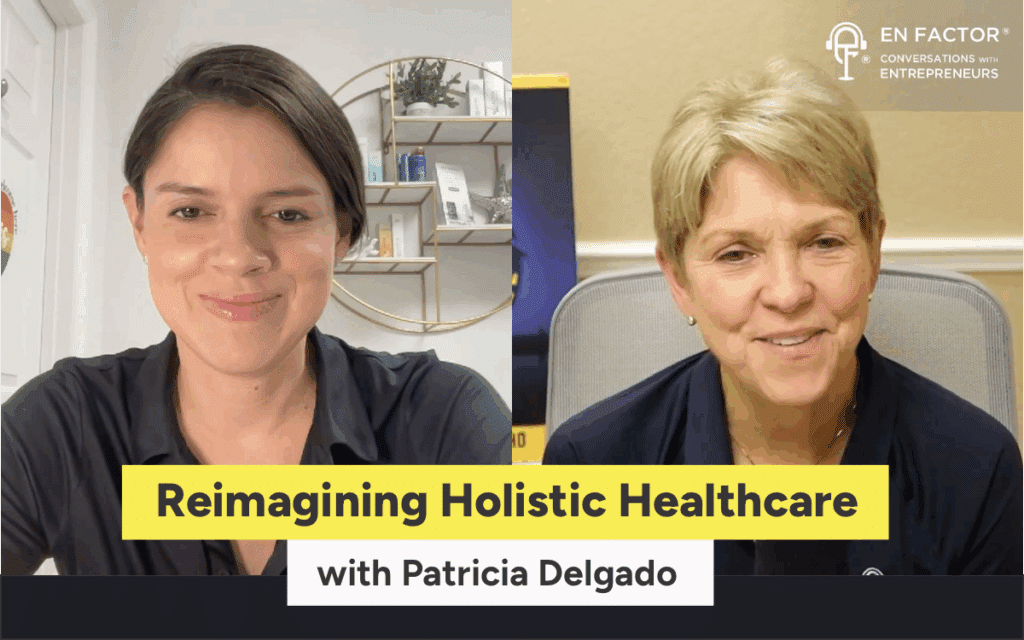Patricia Delgado watched her workplace transform overnight. The private equity acquisition changed everything.
Patient care became secondary to revenue targets. The focus shifted from healing to billing. She saw what was coming and made a choice that thousands of healthcare professionals are now making.
She left to start her own practice.
Corporate ownership now controls the majority of all U.S. doctors. Meanwhile, burnout rates among health workers have jumped. The correlation isn’t coincidental.
The False Choice Between Profit and Patient Care
I’ve observed something fascinating in my conversations with healthcare entrepreneurs. They reject the assumption that business success requires compromising patient care.
Patricia exemplifies this thinking. She always saw a better way to meet her patients’ needs than the current healthcare environment provided. She wanted to create a different experience for her customers. A more holistic experience.
This truly exemplifies an entrepreneurial mindset in a very challenging industry.
The traditional view sees business as the antithesis of good healthcare. When healthcare providers begin thinking in terms of business, the assumption goes, they lose their patient care focus.
That’s a mistaken assumption.
Patricia found that working in the current system simply didn’t provide what her patients needed. She was particularly concerned that everything focused on profitability rather than creating value and better patient experiences.
Her solution? Build a lean business model with low overhead. Focus on patient care instead of sales targets. Handle most aspects of the business herself while planning strategic expansion.
The result is a practice that serves patients better while remaining financially sustainable.
The See, Do, Repeat Framework in Healthcare
Patricia’s journey perfectly illustrates the entrepreneurial mindset framework I’ve developed through 20 years of research. The ability to recognize an opportunity, the willingness to take action and execute, and the perseverance to execute past failure.
These three elements form the foundation of what she accomplished with her model.
The big difference between Patricia and others? She was willing to step out and take action. Many people have ideas. They identify opportunities. But they never take the steps necessary to execute.
Patricia executed on her ideas. She was willing to step out and try.
Even when she faced multiple setbacks with office locations. After two failed attempts to secure space, she found an ideal location three minutes from her home. The persistence paid off.
She was willing to do whatever it took to provide customers a more holistic experience.
Building Community for Systemic Change
Patricia recognized something crucial. Individual success isn’t enough.
She founded a non-profit organization called Sunrise NPPA Derm to unite nurse practitioners and physician assistants. The goal: provide education and support to help them maintain their integrity and values in healthcare.
She recognized that it’s one thing for her to do it. But if she wants to change the industry and have an impact on the industry, she’s got to build a community.
She’s got to help change the mindset and be transformative on an entire industry basis.
This community-building approach addresses a critical need. Healthcare professionals deal with licensing issues, regulatory requirements, and numerous constraints that other industries don’t face. The journey can feel isolating.
The solution? Surround yourself with other like-minded people. Take the journey together, supporting each other.
Choose not only yourself but choose to support and encourage others. Invite them in to help with your journey.
The Broader Implications
Patricia’s story represents more than individual entrepreneurship. It signals a fundamental shift in how healthcare professionals view their careers and patient care responsibilities.
There are opportunities for healthcare providers to find a more efficient and effective pathway to providing value. Patricia is one example, but there are probably others doing the same.
The movement extends beyond individual practices. Healthcare professionals are looking for ways to provide better, high-quality healthcare. They’re not always finding them in the traditional system.
Her story is important for inspiring others and providing an example of what healthcare practitioners can accomplish when they apply entrepreneurial thinking to patient care challenges.
The entrepreneurial mindset offers healthcare professionals multiple income streams, financial independence, and the freedom to practice according to their values. It provides an alternative to the corporate model that prioritizes shareholders over patients.
A Universal Tool for Change
The most important takeaway from Patricia’s entrepreneurial journey? An entrepreneurial mindset can be valuable in any industry, even in circumstances beyond what we think of as traditional entrepreneurship.
Healthcare professionals face unique challenges. Licensing requirements, regulatory constraints, and established systems that resist change. But these obstacles don’t eliminate opportunities for entrepreneurial thinking.
They create them.
Patricia’s hybrid model addressing both skin conditions and general wellness emerged from Florida regulations requiring her to establish a primary care practice rather than a specialty practice. She turned a constraint into an opportunity.
Her emphasis on collaboration over competition shows another dimension of entrepreneurial thinking. She refers patients to other providers when appropriate and maintains a network of professionals for consultation on complex cases.
This approach ensures comprehensive patient care while preserving independence.
The entrepreneurial mindset isn’t about starting businesses. It’s about bringing innovative thinking to solve problems in any field. Patricia demonstrates how healthcare professionals can reclaim their values through entrepreneurial action.
Her advice for aspiring healthcare entrepreneurs captures the essence: “If you really want to do it and you’re passionate about it, go for it and believe in yourself.”
The importance of networking and building community in healthcare entrepreneurship reinforces the philosophy that patient-centered care can thrive alongside sustainable business models.
Corporate healthcare created its own competition by prioritizing profit over patient care. Healthcare professionals like Patricia are responding with entrepreneurial solutions that serve patients better while building financially sustainable practices.
The exodus from corporate medicine has begun. The question isn’t whether it will continue.
The question is whether healthcare professionals will build the communities and support systems necessary to make the transition successful.
Patricia’s story suggests they will.
To hear more from my conversation with Patricia, tune in to this weeks episode of the En Factor Podcast here!
